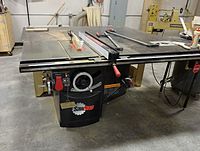
Photo from wikipedia
Previously cubic boron nitride (CBN) and ceramic inserts were used for the dry turning of heat-treated D3 tool steel with cutting speed beyond 200 m/min, suffers from severe tool wear and… Click to show full abstract
Previously cubic boron nitride (CBN) and ceramic inserts were used for the dry turning of heat-treated D3 tool steel with cutting speed beyond 200 m/min, suffers from severe tool wear and generation of high temperature at the interface. To overcome these shortcomings, a hybrid ceramic insert that is, Al2O3 + Ti (C,N) with coated (TiN) is used in dry turning of D3 tool steel (heat-treated). Use of the hybrid insert with a lower feed rate (0.04 mm/rev) and a minimum depth of cut (0.4 mm) improves the surface quality of the turning process by significantly reducing the tool wear and cutting forces requirement in a cutting speed range of 165– 175 m/min. Even though ceramic tool inserts have high wear resistance at elevated temperatures but it has limited impact strength. So, ceramics is only recommended for shocks and vibration-free high-speed cutting operations of hardened steel under a dry environment. The novelty of this article is the development of a wear map for the analysis and prediction of tool wear. The Scanning electron microscope studies of wear region elucidate that low tool wear that the predominant modes of wear for low tool wear cutting conditions are delamination and abrasion. Besides for higher tool wear the prevailing wear mode is a combination of abrasion as well as adhesion wear. It is perceived that our proposed methodology outperforms the state-of-the-art methods.
Journal Title: Proceedings of the Institution of Mechanical Engineers, Part B: Journal of Engineering Manufacture
Year Published: 2022
Link to full text (if available)
Share on Social Media: Sign Up to like & get
recommendations!